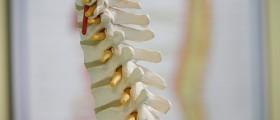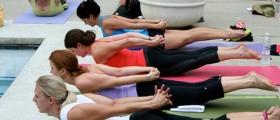
Avoidance
Any exercises that could potentially cause strain in the lumbar area or lower back should not be undertaken. Stretching the hamstring means a stretching of the root of the sciatic nerve and because of this, stretching the hamstring heavily should be avoided at all costs. If you do end up stretching the root of the sciatic nerve, this could lead to major injury.
Stretching the abdomen can be a problem with regard to sciatica. Abdominal stretching will mean an increase of spinal pressure, as well as irritation of the nerves. Excessive abdominal movement or stretching should not be undertaken until the symptoms of sciatica have completely disappeared.
Weightlifting
Weightlifting or using weights whilst stretching are, logically, some things that you should not be doing whilst suffering from sciatic pain. Do not undertake full body squats whilst carrying barbells on the shoulders. This exercise can cause severe damage to the spine and is often the cause of injury in the lower spine. Herniations and pinched nerves are possible consequences of this type of activity and pain may be felt particularly in the buttocks should you undertake this form of exercise. Deadlifting is also a bad idea and can increase sciatic pain as well as compressing the spine.
Sit ups performed with straight legs should also be ruled out if you want to recover properly from sciatica. Pressure is put on the spinal discs during this exercise and thus it should be avoided. If you are undertaking weightlifting, make sure to use some kind of lower back support. Weightlifting is often the root cause of sciatic pain, so try to stick to low-impact exercises that do not require spinal pressure. It is important to maintain a strong back if you do lift weights.
In summary, avoid any exercises or activities that can put strain on areas directly or indirectly linked with the sciatic nerve. Avoid straining the lower back, hamstrings, abdomen and if at all possible, do not undertake heavy weightlifting. If avoidance is combined with a proper strengthening program, sciatica can be successfully combated.
















Your thoughts on this
Loading...